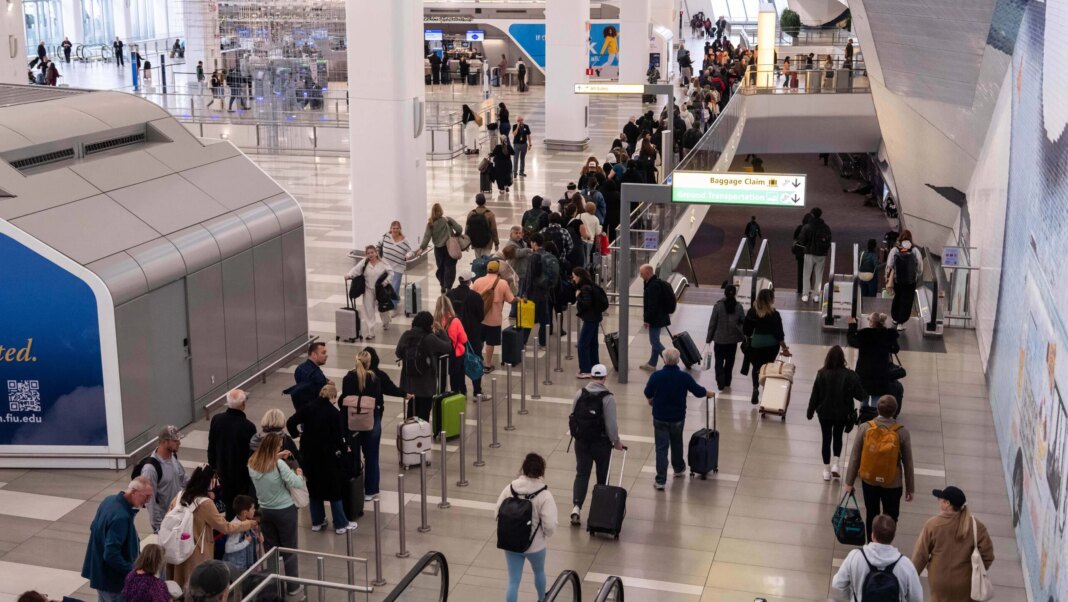The recent flight cancellations at airports across the U.S. have cast a shadow over travel plans, with indications that disruptions might continue even after the anticipated government shutdown ends. As air traffic control systems grapple with the fallout, travelers find themselves navigating a frustrating maze of delays and cancellations.
The Federal Aviation Administration (FAA) has taken drastic measures by reducing flights as more air traffic controllers, who have been unpaid for weeks, stop coming to work. This has created a domino effect, leading to significant operational challenges during one of the busiest travel seasons of the year.
Recently, the Senate made a first step toward ending the shutdown, yet final approval remains uncertain. Transportation Secretary Sean Duffy has emphasized that flight cuts are expected to persist until safety metrics improve. This statement underscores the FAA’s commitment to maintaining air travel safety even amid staffing issues.
Over the past weekend, airlines have canceled thousands of flights in compliance with FAA directives to eliminate at least 4% of scheduled flights. These cancellations are projected to escalate, reaching 6% for 40 of the nation’s busiest airports by Tuesday and potentially increasing to 10% by the end of the week. Such dramatic reductions are particularly distressing for travelers, many of whom have essential plans tied to these flights.
Frustration among passengers is palpable. Todd Walker, a traveler whose flight from San Francisco to Washington was canceled, shared a personal account of disruption: he missed his mother’s 80th birthday celebration due to the sudden cancellations. These stories highlight the broader emotional toll that flight disruptions can have on families and friends throughout the country.
As of Monday morning, airlines reported the cancellation of 1,600 flights for that day alone, with nearly 1,000 additional cancellations anticipated for Tuesday. Fortunately, international flights have remained largely unaffected so far, but the chaos has nonetheless rippled through domestic travel networks.
Beyond the mandated cuts, delays have been pervasive at airports nationwide since the shutdown began. The FAA’s protocol dictates a slowdown in air traffic whenever there is a shortage of controllers, which can exacerbate delays and frustrate travelers even further. This precaution, while necessary for safety, creates a backlog that many may not expect until arriving at the airport.
As the shutdown progresses, air traffic controllers face the looming threat of a second missed payday. The uncertainty surrounding when they will receive back pay once operations resume only adds to the strain. Nick Daniels, the head of the controllers’ union, has scheduled a news conference to discuss the toll the shutdown has taken on staff and operations.
Indeed, the shutdown has amplified an existing crisis in air traffic controller staffing. Duffy has pointed out that the government has been wrestling with a shortage of controllers for years, and the current situation has only worsened it. Some controllers are choosing to retire early or resign, prompted by the financial pressures brought on by the shutdown. Before this crisis developed, efforts were underway to recruit and train additional controllers and provide incentives to retain experienced personnel.
Looking ahead, Duffy has cautioned that if the shutdown extends much longer, air travel could reach a point where it is “reduced to a trickle” in the lead-up to Thanksgiving, traditionally one of the busiest times for air travel. The ongoing situation leaves many wondering how their travel plans may be affected and whether they will be able to reunite with loved ones during the holidays.



